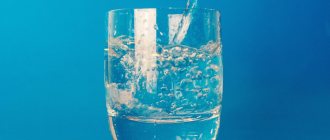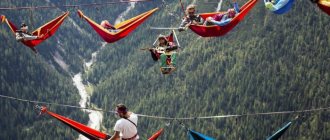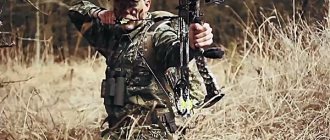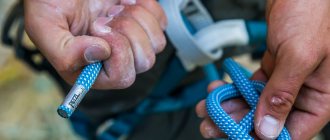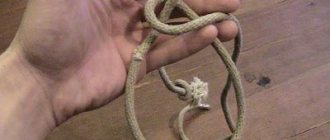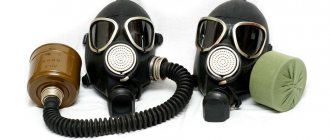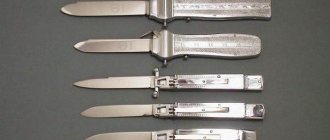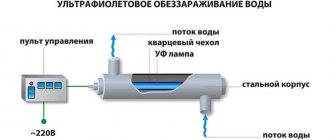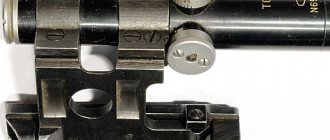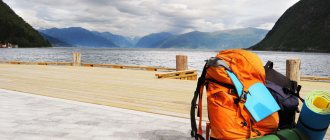types of kayaking , each requiring its own specific type of kayak.
Freestyle whitewater Rafting Rowing slalom Siyaking Kanupolo Snowkayaking Squirtboating
Freestyle on white water
Freestyle on white water is the official name of the discipline, formerly freestyle kayaking , rodeo , playboating . The essence of freestyle kayak is performing acrobatic elements on a local water obstacle, wave or barrel. Such a place for skating is called a placepot :
Performing a freestyle element on rough water called Space Godzilla at the Finnish playground Neitikoski, near the town of Lieksa.
I specialize in this discipline; it also provides useful skills necessary in other types of kayaking - Eskimo rollover, skills in a barrel and on a shaft, surfing skills. Freestyle kayaks are designed primarily to spin, so they are short and flat-bottomed. The material of manufacture is polyethylene, but the more sporty this direction of kayaking becomes, the more often these boats are made of composite materials - carbon and Kevlar fabrics impregnated with special resins.
Difficulty levels of alloys
There are two main types of alloys - tourist and sports. The first ones take place on accessible rivers near populated areas, do not last long and are designed primarily for families with children. Sports rafting is organized along rivers with rapids, which are assigned high categories of difficulty. Such trips involve people with experience who have previously passed other rivers.
There are 7 categories of obstacles in total:
- 1−2 - tourist routes that are suitable for beginners.
- 3−5 - routes that require experience in passing rapids of varying difficulty. It is highly not recommended for beginners without experience to ride them.
- 6—extremely difficult sections that can only be accessed at your own peril and risk.
- 6+ is a category that is assigned to the only site on the Argut River in the Altai Territory.
Alloy
People who do not know about the different types of kayaking imagine first of all rapid rafting . You can raft in nearby Karelia, but it is much more interesting to go to places where there are mountain rivers - Altai, Caucasus, Sweden, Norway, Corsica.
Rafting is divided into big water rafting , where obstacles are directly formed by water, “Big Volume” . Kayaks for this type of rafting are sharp and flat-bottomed, quite long, which makes them faster and easier, for example, to pass barrels.
There is also “ Creeking” rafting along small rocky rivers, but no less exciting - slides, stone slides, barely covered with a thin layer of water, narrow canyons in rocky walls. Kriking kayaks are rounded, shortened, and often have a curved bottom: these are the types of boats that easily slide off rocks, are less likely to get stuck in narrow places, and are more maneuverable.
Kayaking on mountain rivers also means jumping from plums and waterfalls:
Jumping from a training waterfall in Sweden.
Passing the first waterfall of the lower Rauma section (Norway).
And then there is play kayaking , when every roller encountered on the river is used for surfing or for some special trick, as in freestyle on white water. Kayaks for play rafting are a hybrid of a rafting boat and a freestyle kayak.
Valuable rafting: 7 exciting rafting options
In the sports section “Challenge” we offer you worthy alternatives to leisurely walks and parties. You already know where to ride a bike in the mountains and where it’s better to walk. In the latest issue, we offer you to master not only land methods of transportation, but also the water element. We have collected 7 ideas for river rafting for you - from simple options closer to home to semi-professional routes - as usual, with the support of PayOkay. If you follow this section closely, you already know that this card was created for active young people who do not sit still and are used to getting the most out of traveling.
Fast and easy
Rafting in the Czech Republic
Route: Vltava River, from Vysshi Brod to Borshov Difficulty: 1/5 Details
It is believed that every Czech should not only complete the standard life program with a son, a tree and a house, but also at least once raft on the Vltava, a river that flows through Prague. The classic route is 70 km, which can be sailed in a relaxed manner in 5 days.
If time is limited, you should choose one of the most picturesque “pieces” of the route - down from Cesky Krumlov. In the city, rafting is especially enjoyable and is suitable even for groups with children: inflatable boats slide down “ezes” (specially equipped rapids) - with splashes, flips and other joys of water activities. Whenever you want to make a stop, along the river you will find a million kiosks, tents and summer cafes - some right on the river. You can even take a rafting tour of Prague - many guides will sit in the boat with you and talk about the history and culture of the capital of the Czech Republic while you lean on the oars. A significant bonus from PayOkay that will make spending time in Prague even more enjoyable: until the end of May, cardholders receive increased cashback (3%) when purchasing tickets to museums and other cultural locations.
Rafting in Germany
Route: River Isar, Lengris to Bad Tölz (52 km from Munich) Difficulty: 1/5 Details
Although the Isar is fast and cold, rafting along it is simple and pleasant. Musicians dressed in national Bavarian clothes, who can be found along the route, are responsible for good impressions - they play especially for rafters. And this is not surprising, because rafting and boating is a traditional Bavarian pastime that has not lost its popularity since the 12th century. Of course, initially the river was used only for the movement of goods, but from the 15th century. Passengers began to be sent along the Isar - right up to the areas of Vienna and Budapest. True, at that time they used wooden rafts, which you can still try out today. The season on the Isar is long - from May to the end of September.
Rafting in Georgia
Route: Kura (Mtkvari) river, Vardzia village - Borjomi Difficulty: 2/5 Details
The deepest Georgian river offers a large selection of sections of different difficulty categories, but we liked the picturesque route Vardzia - Borjomi most of all, which can be combined with a cultural program. For example, in Vardzia a cave monastery complex of the 12th century awaits you. - with a dozen churches, chapels, cells and refectories right inside the mountain. The name Borjomi speaks for itself - a resort town with mineral springs that are more than 1.5 thousand years old. Take a walk in the park, ride a cable car, drink healing water - after the shock rafting you deserve it. The best time for rafting on the Kura is April and May, when mountain glaciers melt and the river becomes fullest.
Medium difficulty level
Rafting in Ukraine
Route: river Black Cheremosh, White Cheremosh and Cheremosh, from the village of Usteriki, Carpathians Difficulty: 3/5 Details
Near the village of Usteriki, the Black Cheremosh merges with the White Cheremosh, forming “just” the Cheremosh - a powerful and deep-flowing Carpathian river, which is adored by Ukrainian rafters. The place is so popular among water sports enthusiasts that there is even a sports festival held there - the “Cheremosh Cup”. The season on the river lasts from March to mid-autumn, but the peak is, of course, May. Picturesque nature, high mountains, clean air and water, moderately difficult rapids, pleasant camping and heartfelt conversations over a glass of tea from aromatic local herbs by the fire - this is what a typical rafting in the Carpathians looks like. Organized tours of varying lengths and degrees of difficulty with food and overnight stays will cost you from €22 (1 day) to €70 (3 days) - believe me, you won’t find cheaper options.
Rafting in Italy
Route: Dora-Baltea river, from Pré-Saint-Didier Difficulty: 3/5 Details
The Dora Baltea River starts from Mont Blanc and flows through the Aosta Valley. It is in this place that those who know a lot about rafting prefer to raft. It is full of routes of varying degrees of difficulty, schools that teach rafting, and professional instructors who teach privately, but the main feature of the river is the warm water, on which you can raft without wetsuits or special boots. After a day on the piste, soak in a traditional Italian thermal bath (like Pré-Saint-Didier). Also, this area is full of hotels for every taste - you won’t have to pitch a tent with your hands trembling from fatigue. Aosta is a medieval Italian town that is also worthy of your attention, especially if Rome and Florence have already been conquered. The archaeological museum, the amphitheater and the Colosseum, local wine and pastries - we are sure you will not want to leave Aosta.
Preparation is required
Rafting in Slovakia
Route: Bela River, down from Podbanske Difficulty: 4/5 Details
The Bela River is perhaps the most beautiful and dangerous river in Slovakia and therefore the most popular among rafting enthusiasts. Quite a difficult route with quiet sections, during which you can take a breath and enjoy the beauty of the Tatras, rafting under Mount Krivan. Since Bela is a mountain river, the difficulty and conditions of rafting greatly depend on the weather and time of year. Rafting is allowed from April 15 to September 30, but the best time is considered to be the end of April–May.
If you don’t yet feel the strength to fight such a powerful current, you can start descending from Pribylina - there the level of difficulty is just for beginners. Please note that the river is cold (average temperature +5 ºС). Since you will be rafting in a protected area, it is possible that you will meet roe deer, hares, wolves, goats and other mountain inhabitants.
Rafting in Montenegro
Route: Tara River Canyon, on the border with Bosnia and Herzegovina Difficulty: 4/5 Details
Montenegro is an ideal option to dilute a lazy beach chill with an extreme holiday in the Challenge format. For example, rafting along the canyon of the Tara River, the depth of which is, by the way, 1.2 km (in scale in the world it is second only to the Grand Canyon in the USA). The canyon is located in the Durmitor National Park, a real oasis of untouched nature, where, for example, relict black pines grow, which are already nearly 400 years old. Tara water is so pure that it can be drunk without any treatment. Part of the rafting route, 18 km long, runs through the canyon. It looks spectacular, and its difficulty is high, because here Tara has a sharp drop in altitude and 21 of the 50 rapids of the route, the total length of which is more than 60 km. The route passes under the majestic Djurdjevic Bridge, which spans the canyon - one of the most impressive buildings in the country.
What you need to know about rafting? Tips from PayOkay
Before deciding where to go, keep in mind that rafting routes are classified on a 6-point scale (degree of difficulty from 1 to 6). There may also be clarifications, as they used to be at school: 3+ or 5-. Obstacles that come along the way are also classified (0–6). Please note that without preparation it is safe to conquer a route no higher than category 2. In order not to tempt you in vain, in the article we have listed routes up to 4 points and ranked them by degree of difficulty.
If you are traveling with a group of less than 4 people, keep in mind that you will have to share the boat with other travelers. If you go through rapids of class 3 and above, the weight of the raft is very important, and therefore, in order to balance the boat, the instructor can unite and separate groups, which is also good - you will bring new friends from the trip (believe me, rafting is very bonding).
It is important to understand that there is a team in the boat. You need to row exactly as the instructor says, otherwise, if even one rower doesn’t get into the rhythm, the raft may go off course.
How to prepare for rafting?
So, here's what you'll need in any case: a boat in good condition, a certified instructor, life jackets, helmets, oars, a wetsuit and special boots for cold weather or cold water, and a first aid kit.
What to wear? When choosing clothes, focus more on the air temperature than the water temperature. Leave your swimsuit at home: if you fall out of the boat into water with a strong current and your comrades drag you back, you can say goodbye to your bikini. The best option is a T-shirt and shorts. If it's cold, don't wear coarse cotton T-shirts - they dry horribly and don't keep warm. Listen to your mom and grab a spare set of dry clothes.
What should I wear? Give preference to special shoes for water or sports shoes that can be wet (it is best to take closed ones). Leave your flip-flops and Crocs for the beach - they are too easy to lose during rafting. Of course, take a couple of dry shifts.
Sunscreen and lip balm should be your best friends while rafting - unless you want to be left with a red, chapped face when you get home.
Swap your glasses for contact lenses, and replace your sunglasses with lenses for glasses with plastic lenses. It's much safer this way.
By the way, about safety. Be sure to get insurance. Even if you are rafting with an experienced instructor on a class I river, it is better to have an insurance policy in hand. The main thing when registering is not to say that you are going to a sporting event or to play sports - the insurance coefficients immediately skyrocket.
What does Payokay have to do with it?
If you are reading this article, it means that you are used to taking everything from life. For people like you, MTBank has a special product - the PayOkay card. Its main feature is 1.5% cashback on any purchases made abroad or here. In May, you will be awarded increased cashback (3%) for trips to museums, theaters and other “cultural” places. For transferring Tax Free you can even get 5% back! In addition, PayOkay owners receive free insurance, which will be useful at the embassy when applying for a visa, and is also necessary for any rafter, even if he is an excellent swimmer. Another important point: PayOkay eliminates the need to carry a stack of cash with you - cardholders receive the best rate for payments in foreign currency abroad. It’s very easy to issue a card: you order it on the website, and it is delivered free of charge to your home or office.
Photo - depositphotos.com
CJSC "MTBank", UNN 100394906, OKPO 14619370
Rowing slalom
Rowing slalom is an Olympic sport. The main goal is to complete the route in the minimum time. But this is not just a high-speed descent on a kayak, but active maneuvering: turns, traverses, tactics and strategy. Rowing slalom boats are like wings: long, 3.5 meters, but without a keel, with a flat bottom - fast, light, maneuverable:
According to their intended purpose, slalom kayaks are used on specially equipped slalom channels , where you can hang a course, marking it with poles .
Slalom channel "Troy" in Prague
In both freestyle whitewater and slalom, there are canoeists kayakers in some way - they sit in kayaks, but on their knees. And they row with an oar with one blade:
There is a playful confrontation between kayakers and canoeists, like, for example, skiers and snowboarders: they seem to be doing the same thing, but in different ways. Canoeists say about kayakers: “Twice the oars, half the brains.” And kayakers answer canoeists: “It’s better to spend your whole life with a wet ass than your whole life on your knees” :)
What is rafting
Rafting is the name given to rafting down mountain and lowland rivers on special wide inflatable boats - rafts . The literal translation from English of the word “raft” means raft. The raft has good stability on the water and can accommodate groups of 6 to 8 people. Rafting is not the only “water transport”, but it is the safest. Rafts consist of various inflatable chambers, so that if one is damaged, there is still air in the others and the boat stays afloat. Thanks to the all-terrain nature and reliability of the raft, river rafting has ceased to be a privilege for professionals, but has become an exciting adventure for people with different physical fitness and experience.
Rafting is the safest way to overcome water obstacles
Quite often, on the Internet, the term “rafting” refers not only to rafting on special inflatable boats along mountain rivers, but also to other watercraft. This is where it is important to figure out which one to choose so that the trip meets your expectations, because each has its own nuances and behaves differently during rafting.
A kayak is an elongated plastic boat with a narrow bow and stern. The small dimensions of the kayak make it easy to navigate extreme trajectories of rapids, and kayaks are also indispensable when water levels in rivers are low. However, unlike rafting, the kayak does not have an instructor and can easily be thrown around, so this type of water tourism is more suitable for experienced paddlers.
Kayak is an ideal option for experienced rafters and extreme sports enthusiasts
A kayak is very similar to a kayak, but it is simpler and easier to transport, since it can be disassembled or deflated and will not take up much space. Kayaks come in different sizes; most often 2- and 3-seater inflatable boats are used in rafting. The kayak is perfect for a multi-day tourist trip along small rivers, where high maneuverability through obstacles is important: shallows, fallen trees, etc. However, the kayak is very easy to capsize. Kayaking requires certain skills and abilities.
Kayak - simple and easy to transport
A canoe is another elongated, narrow type of water transport. Canoeing is primarily a different way of boarding, where the paddler sits on his knees rather than leaning on his back, as in a kayak or kayak. Therefore, this is not the most convenient option for long trips. There is also no luggage compartment, like in a kayak or kayak, or body protection from splashes. The canoe's open design is designed for warm weather. But in a canoe you can quickly rush across the surface of the water, like an arrow, in the absence of waves and the presence of certain skills.
Canoe - a type of small boat with a special landing method
A catamaran is a vessel with two parallel hulls connected on the surface, an extremely stable craft, the uniqueness of which is that it is suitable for both family walks and sporting events. Unlike a raft, a catamaran glides more gently through the water due to less drag, but rotates less well around its axis. Catamarans are mainly used for rafting on wide, leisurely rivers where high maneuverability is not required.
A catamaran is an ideal option for both family holidays and sporting events
If we compare the passage of a mountain river in a kayak, catamaran or kayak, which require a fairly high level of training from participants, then rafting itself can be considered a fairly simple and safe way to conquer the water element.
Rafting tours give travelers unforgettable emotions and impressions. The number of rafting fans increases every year. After all, this is a combination of incredible landscapes, fresh air and a feeling of excitement. In addition, this is also health tourism, since during river rafting almost all muscles work, and coordination and a sense of balance also improve. And most importantly, anyone can take part in rafting, be it an experienced tourist or a non-professional beginner. Children can also participate in rafting. Preschoolers, of course, will simply sit in the middle of the boat and contemplate the beautiful scenery and the well-coordinated work of the team. And children over 10 years old can be full team members. The main thing is desire and self-confidence!
Even preschool children can take part in rafting.
Siyaking
Kayaking is not always extreme and rough watering : there is sea kayaking - the phrase seaking , “sea”+”kayaking” = “seayaking”. Long boats with a keel, often a rudder, that can travel long distances on smooth water. They rotate poorly, but are stable on course, designed primarily for forward movement. They are made from both polyethylene and composite materials:
There are kayaks for fishing , open, “ Seat-on-top ” - there is a closed cavity inside the boat, the rower sits on top, as if on the top deck.
Snow kayaking
It is not a separate discipline, but kayaking on snow , from mountains, or on a trailer behind a snowmobile is becoming increasingly popular. What should a kayaker do in winter when the water is frozen? Instead of sleds and cheesecakes - favorite boats. This entertainment is called snow kayaking :
There are also types of kayaking that I was not able to try, for example, surfing kayaks on sea waves - also a separate type of kayaking, and special boats with bows turned up, like oriental slippers; squirt kayaking ( "Squirt Kayaking" ) - the grandfather of freestyle, kayaking, in which certain acrobatic figures are performed both on the surface of the water and under water, when a small-volume boat on a hitch is sunk down along with the rower:
Freestyle Squirt Kayaking, Clare O'Hara
Video about types of kayaking:
Protective equipment
Participation in rafting involves constant proximity to rough water. It just so happens that mountain rivers are not distinguished by particularly warm water, since they originate on glaciers and flow in deep, shady gorges. Of course with some exceptions. For example, the Zambezi in front of the Victoria Falls (after which begins the canyon beloved by rafters all over the world) flows for hundreds of kilometers across the plain, warming up to its entire depth. We in Russia, and indeed in the former Soviet Union, can only dream of such rivers and prepare for the piercing cold of fast and hard water. The rafter's clothing resembles a layer cake made from the most modern synthetic materials: neoprene, Polartec, HiPora, etc. The most important factors are quick air drying and good thermal insulation qualities. You should start with a life jacket, as it is absolutely necessary. Prices for vests range from $30 to $80. Vests are hard (with foam filling) and inflatable. It is important that the vest sits tightly on the rafter, does not interfere with rowing (sea and aviation life jackets are not suitable) and getting out of the water, and does not try to jump off the shoulders in the water. It is enough to have a vest volume of at least 12 liters (sports vests are tested with a weight of only 7 kg). But the main thing to remember is that no vest can replace the ability to swim and will not moor you to the shore on its own - it will only provide insurance and nothing more. The proximity of stones in combination with the speed of the flow, and the blades of the oars of your comrades sometimes ending up in close proximity to your head - these are not all the reasons to put a protective helmet on your head. Lightweight polyethylene helmets are manufactured by several companies specifically for rafting. Their prices are up to $50 and you should not skimp on these hats. Particularly good helmets are: Protec (USA), Prijon and Romer (Germany). Further equipment depends on the rafting conditions. And if on the Zambezi you will additionally need only shorts and sandals, then on the mountain rivers of Central Asia and Altai you will need a neoprene wetsuit, a splash jacket, neoprene shoes and protective trousers with pads on the knees, hips and shins. And in the North, where cold water is combined with low air temperatures, instead of a neoprene suit you will put on Polartec underwear and a dry insulating suit, and put neoprene gloves on your hands. So, in order. Neoprene wetsuit. The most common option is a sleeveless jumpsuit with a deep armhole and a zipper on the chest. Neoprene thickness is from 3 to 5 mm. Knee and hip pads, which are important when kayaking, are not necessary for a rafter. The suit is chosen strictly according to size; when wet it stretches a little, and there should be no cavities between the body and the neoprene. For women, suits have a special cut and are in great short supply. Price - from 100 to 200 $. Suits are not suitable for diving; the presence of sleeves interferes with the use of an oar and chafes the armpits. Short options without hangers or shorts are good only in warm weather. The most popular suits are from Prijon, Hiko, Camara. The splash jacket is made from modern membrane fabric, fits over a neoprene suit and protects your arms and shoulders from splashes. In cold weather, wear a Polartec undershirt. The price for a splash jacket is on average $30-40. Protective trousers are practically not made abroad; they make do with separate shields. In Russia they are made to order; there are interesting designs when the trousers are combined with a life vest into overalls. The rafter wears special rafting shoes. These are usually neoprene boots with rubber ribbed soles. Sometimes the top of the boot is made of durable mesh, then a neoprene sock is worn under the boot. The price of boots from Hiko and Prijon ranges from $30 to $70. Packing your equipment is of great importance for successful rafting. For video and photographic equipment, they use polyethylene cases from the American company Pelicase, their price ranges from $100 to $200. So-called dry bags are convenient for clothing - hermetically sealed soft bags equipped with carrying handles or backpack straps. Rigid polyethylene barrels with a sealed lid are also used. Barrels are recommended for photographic equipment or a first aid kit. Almost all companies involved in the production of rafts and other rafting products produce a wide range of hermetic packaging: Prijon, Hiko, SOTAR, etc.
